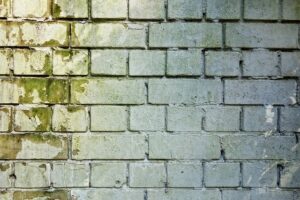How to Identify Different Types of Mold
 Mold is one of the things that every homeowner has to deal with. Mold can start to thrive in dark, humid and moist environments, mostly as a result of water damage. This is why homeowners and renters are urged to get timely home restoration after water damage.
Mold is one of the things that every homeowner has to deal with. Mold can start to thrive in dark, humid and moist environments, mostly as a result of water damage. This is why homeowners and renters are urged to get timely home restoration after water damage.
There are many types of molds and the key is knowing how to identify each. Of course, you can always entail the services of a home restoration company. But if the damage is minute, you can even take care of it yourself at home. Before that, though, it pays to know what each different type of mold looks like and what causes it. After all, prevention is better than cure!
How to Identify Types of Mold?
Mold can start to form on organic substances. Even if you think you have successfully removed the presence of water, moisture can linger in crevices. This leads to mold growth. If you spot the presence of mold in one place, chances are, it is going to be present in other parts of your home too.
Once mold spores form, they spread quickly, and can even prove harmful to human health. Mold often appears as a fuzzy formation that is green, grey, or black in color. However, knowing how to identify types of mold will help you further. Mold has a musty smell, so you might need odor removal services too.
Mold inspection by a professional home restoration company is always a good idea, as mold growth often goes unnoticed. Till the time you spot it, significant damage has already been done.
Here are some mold types and their characteristics.
Alternaria
Alternaria is a common mold type, and it is classified as allergenic mold. Allergenic mold, as the name suggests, triggers allergic reactions in humans. These include watery eyes, runny nose, itchiness and sneezing. Alternaria can be identified easily as it has a very distinct velvety texture. It also has green or brown hair, which makes it further identifiable.
This common mold type usually thrives wherever there is the presence of moisture. Often, the presence of Alternaria indicates water damage in a building. You would be likely to find it in showers, bathrooms, under the sink or anywhere where that has been a pipe leak or flooding. Since Alternaria spreads quickly, it is important to deal with it in a timely manner.
Acremonium
Acremonium is a toxigenic mold, which means it can cause several health hazards. It can possibly cause impaired brain function, and increase the risk of immune system related diseases. You can identify Acremonium as a small, moist mold. Eventually, it will turn into a powdery substance. It is usually pink, orange, grey or white in color.
It is most often found in household systems lie humidifiers and cooling coils. It also grows in tandem with Stachybotrys (black mold). You would also be able to spot this mold by its strong, unpleasant smell.
Penicillium
Penicillium is an allergenic mold and can exacerbate several allergic reactions and other respiratory conditions. It is easily identified by its distinct, velvety texture and vibrant, bluish-green color.
It is most commonly found in water damaged homes and buildings. If your home has suffered water damage, you can find this mold type in carpets, mattresses, ducts and wallpapers. Since it spreads very quickly, mold removal becomes very crucial if you find Penicillium is found in your house.
Chaetomium
Chaetomium is a type of mold that is the most common water damaged homes and buildings. You can recognize it by its cotton-like texture. It will be seen changing color from white to grey to brown, and eventually to black over the course of time. It also has a specific musty odor that makes it easily recognizable.
This mold can lead to several health conditions and can especially affect people with compromised immune systems. It can also trigger skin and nail infections. You’d spot this mold in basements, on leaky roofs, or under sinks. Get rid of the source of water damage to avoid the reoccurrence of this mold.
Stachybotrys
Stachybotrys, or black mold, is a dangerous mold type. It is toxigenic, which means it can lead to several health conditions. Exposure to this mold may lead to fatigue, difficulty breathing and neurological problems as well. Black mold can be recognized by its slimy texture, and dark black or green appearance.
It would most likely be found in areas that have been exposed to moisture for weeks. This would include wood, cardboard, wicker, or any area with high humidity levels. It is important to get rid of black mold as it may also lead to the growth of Acremonium, another toxigenic mold. Black mold spores spread rapidly, and need to be stopped in time.
911 Restoration of Toledo
Mold is a common problem in Toledo due to its harsh weather conditions. If you spot mold growth in your home, get in touch with 911 Restoration of Toledo. They offer a complete water damage restoration process and ensure that your home is mold-free. Mold infestation can be dangerous and you need licensed technicians to ensure you and your family live in a safe, healthy environment.


